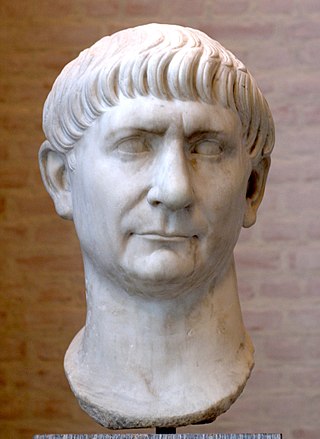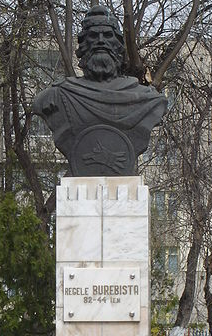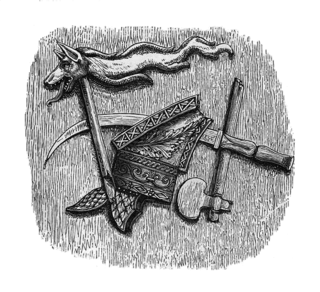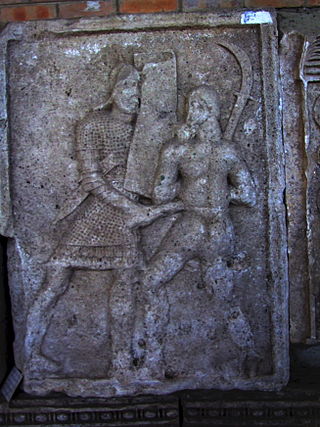Related Research Articles
The Romanian state was formed in 1859 through a personal union of the Danubian Principalities of Moldavia and Wallachia. The new state, officially named Romania since 1866, gained independence from the Ottoman Empire in 1877. During World War I, after declaring its neutrality in 1914, Romania fought together with the Allied Powers from 1916. In the aftermath of the war, Bukovina, Bessarabia, Transylvania, and parts of Banat, Crișana, and Maramureș became part of the Kingdom of Romania. In June–August 1940, as a consequence of the Molotov–Ribbentrop Pact and Second Vienna Award, Romania was compelled to cede Bessarabia and Northern Bukovina to the Soviet Union and Northern Transylvania to Hungary. In November 1940, Romania signed the Tripartite Pact and, consequently, in June 1941 entered World War II on the Axis side, fighting against the Soviet Union until August 1944, when it joined the Allies and recovered Northern Transylvania.

Trajan was a Roman emperor from AD 98 to 117, the second of the Five Good Emperors of the Nerva–Antonine dynasty. He was a philanthropic ruler and a successful soldier-emperor who led the Roman Empire to its greatest territorial extent by the time of his death. He was given the title of Optimus by the Roman Senate.

The 80s was a decade that ran from January 1, AD 80, to December 31, AD 89.

The 100s was a decade that ran from January 1, AD 100, to December 31, AD 109.
Year 106 (CVI) was a common year starting on Thursday of the Julian calendar. At the time, it was known as the Year of the Consulship of Commodus and Civica. The denomination 106 for this year has been used since the early medieval period, when the Anno Domini calendar era became the prevalent method in Europe for naming years.
Year 113 (CXIII) was a common year starting on Saturday of the Julian calendar. At the time, it was known as the Year of the Consulship of Celsus and Crispinus. The denomination 113 for this year has been used since the early medieval period, when the Anno Domini calendar era became the prevalent method in Europe for naming years.

Dacia was the land inhabited by the Dacians, its core in Transylvania, stretching to the Danube in the south, the Black Sea in the east, and the Tisza in the west. The Carpathian Mountains were located in the middle of Dacia. It thus roughly corresponds to present-day Romania, as well as parts of Moldova, Bulgaria, Serbia, Hungary, Slovakia, and Ukraine.

The Dacians were the ancient Indo-European inhabitants of the cultural region of Dacia, located in the area near the Carpathian Mountains and west of the Black Sea. They are often considered a subgroup of the Thracians. This area includes mainly the present-day countries of Romania and Moldova, as well as parts of Ukraine, Eastern Serbia, Northern Bulgaria, Slovakia, Hungary and Southern Poland. The Dacians and the related Getae spoke the Dacian language, which has a debated relationship with the neighbouring Thracian language and may be a subgroup of it. Dacians were somewhat culturally influenced by the neighbouring Scythians and by the Celtic invaders of the 4th century BC.

Decebalus, sometimes referred to as Diurpaneus, was the last Dacian king. He is famous for fighting three wars, with varying success, against the Roman Empire under two emperors. After raiding south across the Danube, he defeated a Roman invasion in the reign of Domitian, securing a period of independence during which Decebalus consolidated his rule.

Burebista was the king of the Getae and Dacian tribes from 82/61 BC to 45/44 BC. He was the first king who successfully unified the tribes of the Dacian kingdom, which comprised the area located between the Danube, Tisza, and Dniester rivers, and modern day Romania and Moldova. In the 7th and 6th centuries BC it became home to the Thracian peoples, including the Getae and the Dacians. From the 4th century to the middle of the 2nd century BC the Dacian peoples were influenced by La Tène Celts who brought new technologies with them into Dacia. Sometime in the 2nd century BC, the Dacians expelled the Celts from their lands. Dacians often warred with neighbouring tribes, but the relative isolation of the Dacian peoples in the Carpathian Mountains allowed them to survive and even to thrive. By the 1st century BC the Dacians had become the dominant power.

Trajan's Dacian Wars were two military campaigns fought between the Roman Empire and Dacia during Emperor Trajan's rule. The conflicts were triggered by the constant Dacian threat on the Danubian province of Moesia and also by the increasing need for resources of the economy of the Empire.

The Third Battle of Tapae (101) was the decisive battle of the first of Trajan's Dacian Wars, in which the Roman Emperor defeated the Dacian King Decebalus's army. Other setbacks in the campaign delayed its completion until 102. The battle is most likely the battle-scene depicted on Plate 22 of Trajan's column.

Domitian's Dacian War was a conflict between the Roman Empire and the Dacian Kingdom, which had invaded the province of Moesia. The war occurred during the reign of the Roman emperor Domitian, in the years 86–88 AD.

Trajan's First Dacian War took place from 101 to 102.

Trajan's Second Dacian War was fought between 105 and 106 because the Dacian king, Decebalus, had broken his peace terms with the Roman Emperor Trajan from the Trajan's First Dacian War.

The military history of Romania deals with conflicts spreading over a period of about 2500 years across the territory of modern Romania, the Balkan Peninsula and Eastern Europe and the role of the Romanian military in conflicts and peacekeeping worldwide.

Duras, also known as Duras-Diurpaneus, was king of the Dacians between the years AD 69 and 87, during the time that Domitian ruled the Roman Empire. He was one of a series of rulers following the Great King Burebista. Duras' immediate successor was Decebalus.

The history of Dacian warfare spans from c. 10th century BC up to the 2nd century AD in the region defined by Ancient Greek and Latin historians as Dacia, populated by a collection of Thracian, Ionian, and Dorian tribes. It concerns the armed conflicts of the Dacian tribes and their kingdoms in the Balkans. Apart from conflicts between Dacians and neighboring nations and tribes, numerous wars were recorded among Dacians too.
This section of the timeline of Romanian history concerns events from Late Neolithic until Late Antiquity, which took place in or are directly related with the territory of modern Romania.

The Battle of Histria, c. 62–61 B.C., was fought between the Bastarnae peoples of Scythia Minor and the Roman Consul Gaius Antonius Hybrida. The Bastarnae emerged victorious from the battle after successfully launching a surprise attack on the Roman troops; Hybrida escaped alongside his cavalry forces leaving behind the infantry to be massacred by the Bastarnian-Scythian attackers.
References
- 1 2 LeGlay, Marcel; Voisin, Jean-Louis; Le Bohec, Yann (2001). A History of Rome (Second ed.). Malden, Massachusetts: Blackwell. p. 271. ISBN 0-631-21858-0.
- ↑ "De Imperatoribus Romanis". An Online Encyclopedia of Roman Emperors. Retrieved November 8, 2007.
Because the Dacians represented an obstacle against Roman expansion in the east, in the year 101 the emperor Trajan decided to begin a new campaign against them. The first war began on 25 March 101 and the Roman troops, consisting of four principal legions (X Gemina, XI Claudia, II Traiana Fortis, and XXX Ulpia Victrix), defeated the Dacians.
- ↑ "Battle of Sarmizegetusa (Sarmizegetuza), A.D. 105: De Imperatoribus Romanis". An Online Encyclopedia of Roman Emperors. Retrieved November 8, 2007.
Although the Dacians had been defeated, the emperor postponed the final siege for the conquering of Sarmizegetuza because his armies needed reorganization. Trajan imposed on the Dacians very hard peace conditions: Decebalus had to renounce claim to part of his kingdom, including the Banat, Tara Hategului, Oltenia, and Muntenia in the area south-west of Transylvania. He had also to surrender all the Roman deserters and all his war machines. At Rome, Trajan was received as a winner and he took the name of Dacicus, a title that appears on his coinage of this period. At the beginning of the year 103 A.D., there were minted coins with the inscription: IMP NERVA TRAIANVS AVG GER DACICVS.
- ↑ Jackson, Nicholas (2022). "First Dacian War". Trajan: Rome's Last Conqueror (1st ed.). UK: GreenHill Books. ISBN 978-1784387075.